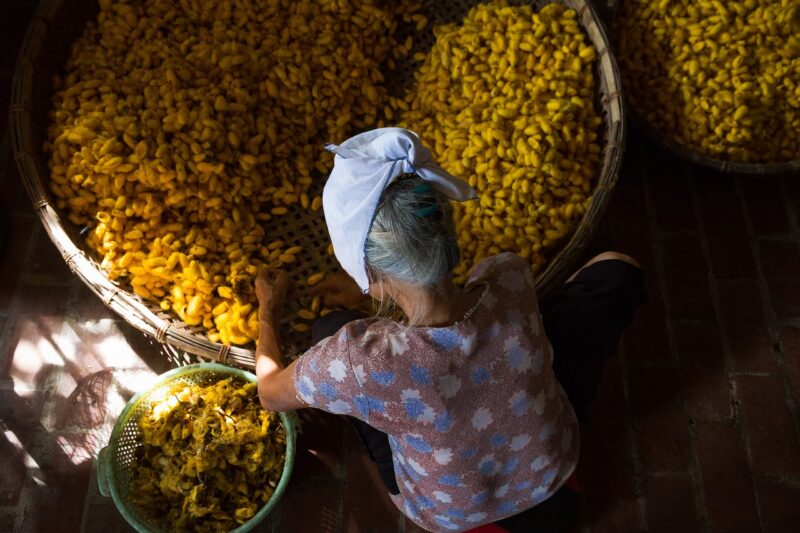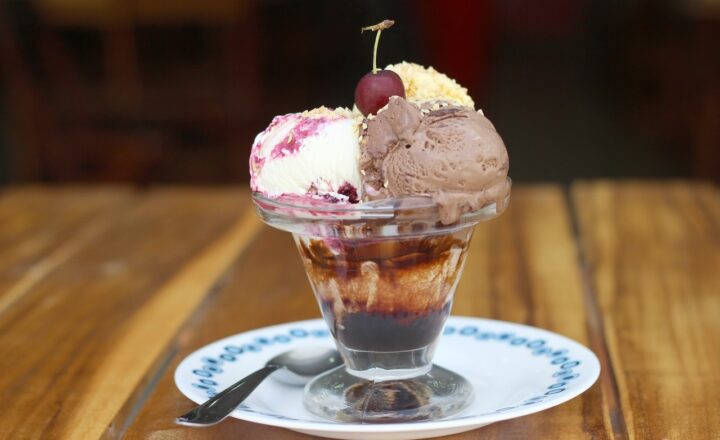The Science of Cooking: How Heat Changes Food at the Molecular Level
November 16, 2024

Cooking is more than just a means to prepare food; it is an intricate dance of chemistry and physics that transforms raw ingredients into delicious meals. At the heart of this process lies the application of heat, which induces a series of molecular changes that affect the texture, flavor, and nutritional content of our food. In this article, we will delve into the fascinating science behind cooking and how heat alters food at the molecular level, providing a deeper understanding that can help both amateur and professional cooks alike.
1. The Basics of Cooking and Heat Transfer
Heat transfer is the process of thermal energy movement from one substance to another. In cooking, there are three primary modes of heat transfer: conduction, convection, and radiation. Understanding these modes is crucial for mastering the cooking process.
– **Conduction**: This occurs when heat is transferred directly through a material, for example, a hot skillet cooking a piece of meat. The heat from the skillet is conducted to the meat, causing it to cook.
– **Convection**: In this process, heat is transferred through fluids (liquids or gases). For instance, boiling water transfers heat to pasta, cooking it evenly.
– **Radiation**: This involves heat transfer through electromagnetic waves. Think of grilling, where the heat radiates from the grill to the food.
Each cooking method utilizes these heat transfer modes in different ways, significantly influencing how food is cooked and how its molecular structure changes.
2. Understanding Food at the Molecular Level
To appreciate how heat changes food, we need to look at the molecular makeup of various ingredients, primarily proteins, carbohydrates, and fats. Each type reacts differently to heat.
– **Proteins**: These molecules are made up of long chains of amino acids. When exposed to heat, proteins undergo denaturation, where they unravel and lose their original structure. This change alters the texture of meat, causing it to become firmer. Cooking an egg is a classic example; its proteins coagulate, transforming the liquid egg into a solid.
– **Carbohydrates**: Heat causes starches to gelatinize, making them absorb water and swell. This is essential in baking when flour mixes with water to create a dough. The sweetness of sugars also develops at higher temperatures due to caramelization, leading to richer flavors in baked goods.
– **Fats**: When heated, fats melt and can reach high temperatures without boiling, a key factor in frying. The Maillard reaction, which occurs between amino acids and reducing sugars when heated, gives browned foods their distinct flavor and color. This complex set of reactions is a cornerstone of delicious cooking.
3. The Maillard Reaction: A Flavorful Transformation
The Maillard reaction is a form of non-enzymatic browning that occurs when proteins and sugars react under heat. This process not only gives cooked foods a brown color but also contributes to complex flavor development. It’s responsible for the crispy crust of bread, the sear on a steak, and the aroma of roasted coffee.
**Key Aspects of the Maillard Reaction:**
– **Temperature**: The reaction intensifies at higher temperatures (typically above 140°C or 285°F), which is why searing meat results in a richer flavor profile compared to cooking at lower temperatures.
– **Time**: The longer the food is exposed to these temperatures, the more developed the flavors and colors become, but there is a fine line before burning occurs.
– **pH Levels**: The pH of food can influence the Maillard reaction. A more alkaline environment speeds up the reaction, which is why adding baking soda to certain recipes can enhance browning.
Understanding the Maillard reaction equips cooks with the knowledge to enhance flavors in their dishes.
4. Caramelization: The Sweet Side of Heat
Caramelization is the process of sugar breaking down when heated, giving rise to its unique flavor and color. This occurs when sugars are subjected to heat above 160°C (320°F), leading to a transformation that enhances sweetness, flavor complexity, and visual appeal.
Caramelization includes several stages:
– **Light Caramelization (160°C – 170°C)**: Yields a light golden color and subtle sweetness.
– **Medium Caramelization (170°C – 180°C)**: Darker color with deeper flavors, often used for sauces and desserts.
– **Dark Caramelization (above 180°C)**: Rich, bitter flavors develop, ideal for certain confections and sauces, but care must be taken to avoid burning.
Caramelization is notably seen in foods like onions, fruits, and sugar, each yielding different textures and flavors when cooked.
5. The Role of Acid in Cooking
Acids, such as vinegar, lemon juice, and yogurt, play a pivotal role in food preparation. They can affect texture, flavor, and color, and interact with proteins and starches in unique ways.
**Effects of Acids in Cooking:**
– **Tenderizing Proteins**: Acidic marinades can break down proteins, making meats more tender. Marinating chicken in yogurt, for instance, helps to soften the meat while adding flavor.
– **Enhancing Flavor**: Acids boost flavor brightness, elevating the overall taste profile of a dish. A squeeze of lemon juice can transform the taste of a fish dish.
– **Color Preservation**: In vegetable cooking, acids can help maintain bright colors. For example, adding lemon juice to green vegetables helps them retain their vibrant green hue.
Incorporating acids can profoundly enhance culinary results.
6. The Importance of Cooking Techniques
Different cooking techniques can influence how heat interacts with food and the resulting molecular changes. Here are a few common methods:
– **Baking**: A dry heat method that utilizes convection oven heat. This leads to gelatinization of starches and may involve the Maillard reaction for browning.
– **Boiling**: Involves cooking food in water, where heat transfer occurs through convection. This method can overly soften ingredients if overcooked, limiting flavor development.
– **Frying**: Using hot oil, this method quickly cooks food and enhances flavor through the Maillard reaction and caramelization, creating a crispy exterior while maintaining moisture within.
– **Steaming**: A gentle cooking method that preserves nutrients and flavor, especially in vegetables by using vapor heat. It allows for a rapid cooking process with minimal nutrient loss.
Understanding each method’s impact on molecular change can help cooks make informed choices for desired textures and flavors.
Conclusion
The interplay of heat and food is a fascinating realm of science. By grasping the molecular changes that occur during cooking, from the denaturation of proteins to the intricate processes of caramelization and the Maillard reaction, cooks can elevate their culinary skills to new heights. So next time you’re whipping up a meal, remember, there’s a whole world of science simmering just below the surface, waiting to enhance your cooking experience and create unforgettable dishes.
By applying this knowledge, you can experiment with various cooking techniques, ingredients, and methods, leading to a greater appreciation for the culinary arts and the delightful food that results.
Whether you are a home cook or a seasoned chef, embracing the science of cooking can lead to tastier, healthier meals that wow both your palate and your guests.







